Brilliant Maps
Making Sense Of The World, One Map At A Time

Star Trek Map Of The Alpha & Beta Quadrants
The map above is Shakaar’s Alpha/Beta map v3.3; a fan-made creation showing the Alpha and Beta quadrants of the Star Trek universe.
The map shows both major and minor powers that have appeared in the various series over the years.
At the centre is the United Federation of Planets, which borders the major power of the Klingon Empire, Roman Star Empire and the Cardassian Union. More minor powers include the Breen, Ferengi Alliance, Tholian Assembly, Sheliak Corporate and the Gorn Hegemony among many, many others.
The map highlights:
- Principal Systems
- Minor Systems
- Non-Aligned Systems
- Dead Systems
- Government Borders
- Points of Interest
- Navigation Hazards
- Star Clusters
- Stations or Starbases
For more Star Trek maps see:
- Star Trek Stellar Cartography: The Starfleet Reference Library
- Star Trek Star Charts: The Complete Atlas of Star Trek
- Star Trek Maps
Enjoy this map? Please help us by sharing it:
Get Our Latest Brilliant Maps Weekly:
Other popular maps.
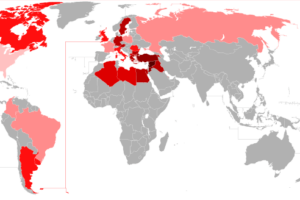
Syrian Refugees Per Capita: Who’s Been The Most & Least Generous
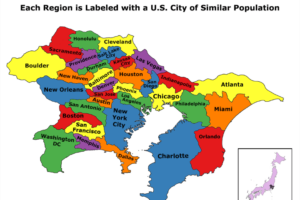
Population of the Metro Tokyo Area Compared To US Cities

World Toilet Paper Map Showing Spending On Tissue & Hygiene
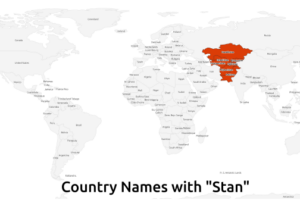
Why The United States Is A ‘-Stan’ Country Like Kyrgyzstan
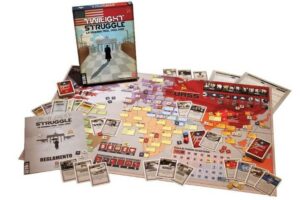
The 28 Best Map Based Strategy Board Games You’ve Probably Never Played

Scratch Map Giveaway: Win 1 of 3 Scratch Off World Maps From Landmass
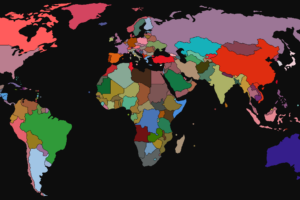
Average Colour Hue of Country & US State Flags
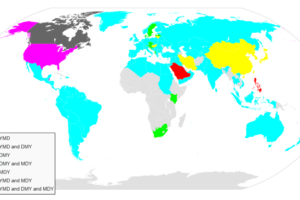
How To Write The Date In Different Countries
December 13, 2017 at 8:14 pm
I know that: a) it’s a bit of fun b) it’s hard to make a 2d map of 3d space and c) there no official maps to go off
But Christ, there’s a lot of stuff on here which makes no sense.
Justin Spaulding says
September 7, 2019 at 2:36 am
Isn’t gamma haromi 2 supposed to be in the haromi cluster…. Good effort though! S3. E8 I think. The “gatherers”
Danny Beans says
November 11, 2019 at 11:18 pm
Why are Ceti Alpha V and Ceti Alpha VI in completely different sectors? I mean, okay, Chekov can be a little dumb sometimes, but that’s one helluva mistake to make.
Jadziah Dax says
April 7, 2021 at 6:03 pm
Can’t wait to see the one you do!
petewinsemiusyahoocom says
November 23, 2022 at 3:47 pm
I agree, several planets said to be in the alpha quadrant are in the beta quadrant and vice versa or not listed at all.
Resolute_Phoenix says
February 8, 2018 at 11:41 pm
Okay so Xindus by Vulcan…. kys I’m not even gona bother looking further don’t make a map if you don’t know what your talking about
February 18, 2019 at 9:03 pm
Romulons should have Dyson sphere (at least at Romulus and Remus). Their ship tech is based on creating black holes which will give a ship a reactor core with a life of a handful of years BUT it’s just like an inefficient battery because it takes way more energy to initially create it then it will give off over its life BUT it’s portable. Sure beats light sails if your depending on home system energy and way more flexible too. This was their tech wheelhouse, and was their interstellar travel energy source instead of antimatter. It makes total sense for them to have harnessed the majority of their native suns energy to create reactor cores wherever they needed a portable energy that couldn’t tap into the system wide grid.
February 22, 2019 at 9:26 pm
A few questions… 1) Why are there several Indus VIII on the map?, 2) I do not see the First Federation on this map — they should be near the Ferengi!, 3) Where is the Kelvin planet? (The planet colonized by the Kelvins from “By Any Other Name”), 4) Maybe I’m wrong, but I do not see the Dyson Sphere that TNG crew ran into?
Shane Montgomery says
March 4, 2020 at 10:25 pm
I don’t see Barzan II or the Barzan Wormhole here?
Pickard says
January 23, 2021 at 3:39 pm
They are there. Literally the only Dyson sphere symbol near the bottom.
August 6, 2019 at 5:03 pm
Spock: He is intelligent, but not experienced. His pattern indicates two dimensional thinking.
Glenn Bryson says
November 15, 2019 at 6:52 pm
Not your fault, I know;
Vulcan is “Supposed” to be “A little over sixteen” light years from earth. Yet the map has it at around 1000. That’s one of my biggest gripes about Star Trek (I absolutely love Star Trek, don’t get me wrong). Distances and travel times are so inconsistent and unrealistic based on the documented scales, maps, etc.
March 14, 2020 at 11:46 pm
Did you mean Starbase 375 instead of 395? As in the starbase from S6 of DS9 after the Dominion took over the station?
Avro Arrow says
March 24, 2020 at 7:04 pm
I love this map, especially how you have the Hydran Kingdom, the Lyran Star Empire and the Kzinti Hegemony are listed (where is the Interstellar Concordium?). I have one small nit-pick to make and that is you have two systems named “Nelvana III”. They’re both in the upspin Beta quadrant but one is in the Romulan Neutral Zone and the other is further upspin and outward (left). I think that you might consider making most of the empty space that is coreward of Klingon and Romulan space into the ISC. They were referred to as being a Galactic Superpower residing on the far side of both those Empires (so, coreward).
Gray.Elton says
May 19, 2020 at 3:21 am
If we do or don’t do it, someone will laugh
July 15, 2020 at 1:53 am
I dont understand how this can be called a map of the star trek galaxy when there isnt even a spot or indication of where earth is. Who makes a map without earth when you have a series where its location is based on earth. In the series they refer to Earth as Earth. Yet the closes thing to it is on the map is Volcan. Y not add Earth as well? If there is an alternative name how come it’s never mentioned in the shows and a secret for fans?
Brandon says
August 15, 2020 at 4:14 pm
Earth is 100 percent there. It’s Sol. It’s a common alternate name for our star system and has been used in Trek.
February 8, 2021 at 3:26 pm
Sol system. The Greek word for sun. Follow the bold line and look for the team Terran and Vulcan sectors. Sol is on the 4 corners there
May 23, 2021 at 11:35 pm
Cheron is not in the Romulan sphere of influence. It is located in the “Southern most part of the Galaxy”, Captain Kirk. Episode “Let That Be Your Last Battlefield”
That dude says
September 6, 2021 at 5:31 am
Issues: Tykens rift, not Titans. Starbase 47 is about 10 sectors off as memory Beta says it is located between the Tholian assembly and the Klingon empire. Prophets Landing is in the gamma quadrant.
That’s all for now!
That Guy says
May 17, 2022 at 11:20 pm
Alpha Onias III is on here multiple times
John S says
November 16, 2022 at 4:31 am
Don’t the Klingon and Cardassian Empires border each other? A lot of DS9 s4 doesn’t make sense if they don’t…
martijn says
March 18, 2023 at 11:16 pm
where is earth ?
Leave a Reply Cancel reply
Your email address will not be published. Required fields are marked *
This site uses Akismet to reduce spam. Learn how your comment data is processed .
The Tholian Assembly is the state of the non-humanoid Tholians which signed a nonaggression pact with the Dominion, but remained in a neutral position until the end of the war. Contact with the Tholians happens rarely.
- More to Explore
- Series & Movies
Published Mar 10, 2023
Galactic Politics: The Federation and the Dominion
An exploration of the similarities and differences of the two primary belligerents of the Dominion War.
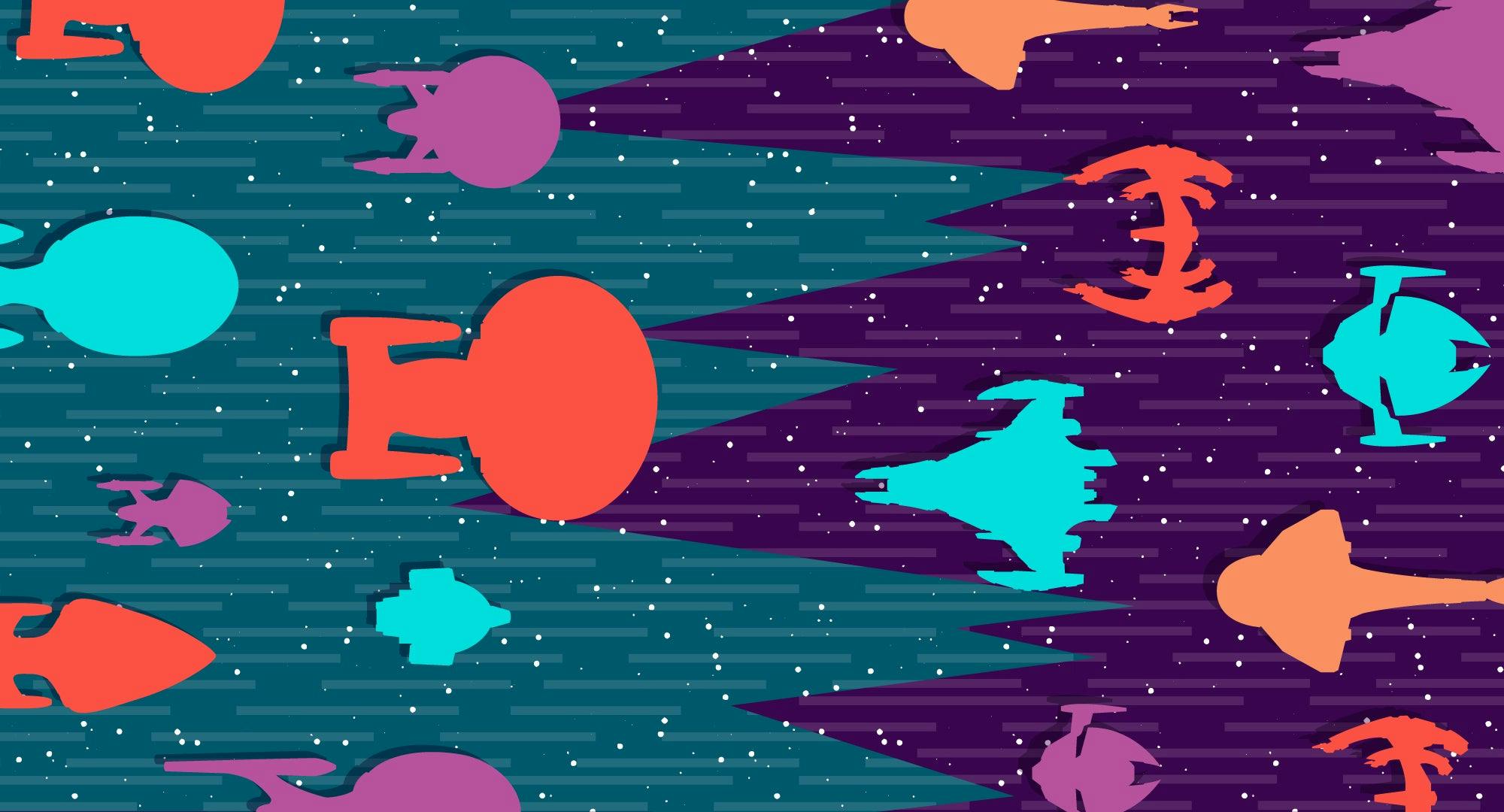
StarTrek.com / Rob DeHart
The Dominion War ravaged the Alpha and Beta Quadrants during the 2370s and involved most of the major powers in the region. The Federation and the Dominion , two of the primary belligerents, suffered severe losses in the conflict that placed their societies at odds with one another. The leaders, histories, values, policies of expansion, styles of governance, and fleets of these two governments contrasted significantly, yet enough similarities existed to indicate their post-war relationship might blossom in a positive fashion.
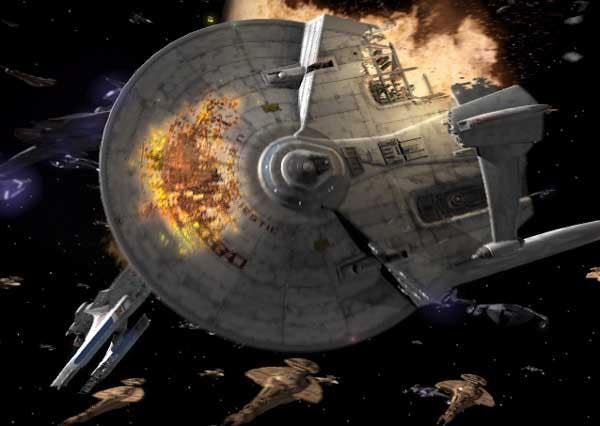
StarTrek.com
The United Federation of Planets , founded approximately 200 years prior to the Dominion War, served as the governing body for a coalition of over 150 worlds. Led by an elected president and council, the Federation government strove to equally represent every citizen in its diverse population.
The creation of the Dominion outdated its counterpart by between 2,000 to 10,000 years, as the Changelings known as the Founders strengthened their influence in the Gamma Quadrant. Unlike the Federation, the planets controlled by the Dominion lacked any influence on their own government. The shape-shifting Founders showed no interest in the affairs of "solids" and, through genetic engineering and cloning, created the Vorta to handle matters of state and the Jem'Hadar to act as enforcers.
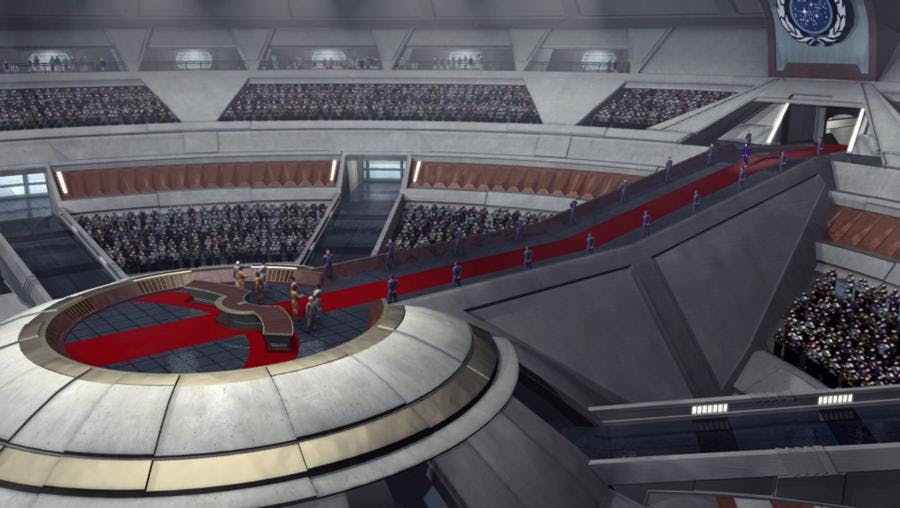
While the leadership structure of each power differed during the war, both governments endured remarkably similar beginnings. Terrans and Founders all originally sought to travel the galaxy in peace, yet they faced many challenges. Conflicts with the Suliban, Xindi, Romulans, Klingons and other assorted species endangered Earth's mission of exploration, but also strengthened the relationships between the Vulcans, Andorians, Tellarites and humanity. The increased cooperation in the region ultimately led to the formation of the Federation.
On the other hand, the well-meaning Founders confronted suspicion, hatred and persecution from the solids they met on their journeys. As they had no allies to turn to, the Founders decided the only way to survive involved creating a government to control those who opposed them. Terrans and Founders may have began on the same path, but the Federation arose from cooperation, while fear permeated the Dominion.
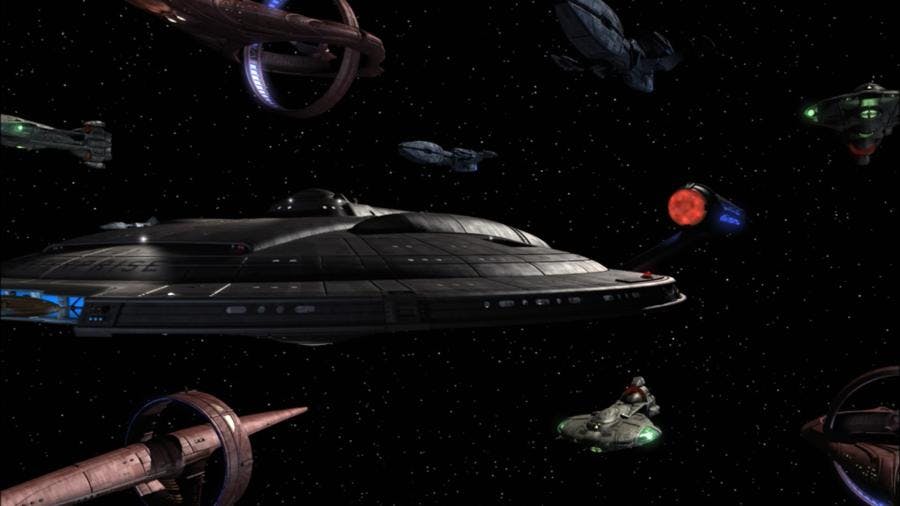
The events surrounding the formation of the Federation and Dominion rippled out to influence the core values of each government. The Federation sought out co-existence with its galactic neighbors, scientific study for the betterment of all, free-will for its citizens, and the enforcement of its laws within its borders. The goals of the Dominion included establishing order throughout the galaxy, controlling worlds so Changelings could not be persecuted and enforcing the will of the Founders.
These two systems seem diametrically opposed in most regards, but subtle similarities pervade their values. Both powers desired to enforce their regulations, but the Federation did so with elections and voluntary membership, while the Dominion pursued an aggressive policy of expansion and suppression. In the same way, both governments wished to live in tranquility, but the Dominion's idea of calm political times involved eliminating their enemies. The Federation worked toward a thriving economy, as did the Dominion, but the Federation strove to better the lives of its citizens, whereas the Dominion aimed to increase its stranglehold on its subjects.
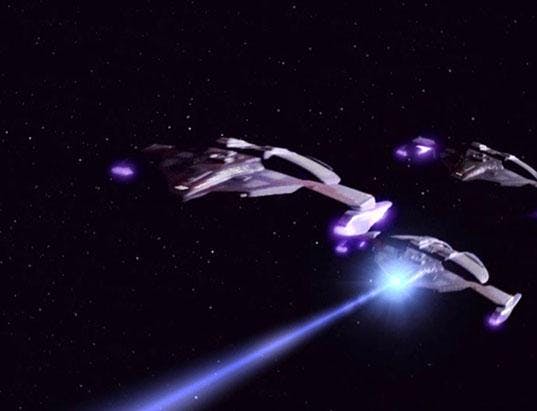
The diverging philosophies between the Federation and the Dominion became even more apparent in their policies of expansion. The Federation established diplomatic and economic ties as it traversed space, only engaging in dialogue with warp-capable species. When unified, advanced worlds became interested in Federation membership, a petition was filed and considered by leaders at the highest levels.
The Dominion also preferred diplomacy when possible, such as the non-aggression pacts signed with the Romulans, Tholians, Miradorn and Bajorans. However, these overtures often served as precursors to subterfuge, with the Alpha Quadrant pacts buying the Dominion time to defeat the Federation and Klingon Empire. Espionage and deception frequently found their way into the Dominion's political repertoire, ranging from sending in Changeling and Vorta infiltrators to provoking conflicts such as the Federation-Klingon War of 2372 and the Battle of the Omarion Nebula, which crippled the Obsidian Order of Cardassia and the Tal Shiar of Romulus. Of course, when official channels did not work, the Dominion simply sent in the Jem'Hadar and took control of worlds they desired.
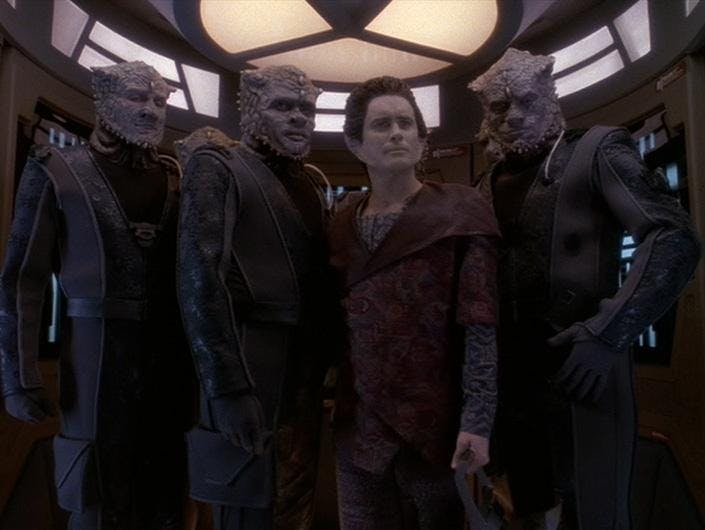
Differences in their protocols regarding new territory ultimately led to variances in their styles of governance. The Federation was composed of culturally unique worlds and people who shared a desire for equality, exploration, free-will and the betterment of all life.
The Dominion enlarged its reach as far as its resources allowed them to at any given time, either strong-arming planets into becoming members or initiating full-scale invasions. The Dominion also held a diverse population under its rule, but their hopes and needs were superseded by the will of the Founders. Egalitarian beliefs found no home in the Dominion, as the Vorta and Jem'Hadar perceived the Changelings to be infallible gods. The general population never gained access to government positions, so the Vorta and Jem'Hadar served as the administration and military branches of the Dominion, respectively.
The worlds of the Federation shared information, technology, and scientific breakthroughs with each other, while the resources of Dominion planets served solely to strengthen the government and allow for continued development at the expense of its citizens.
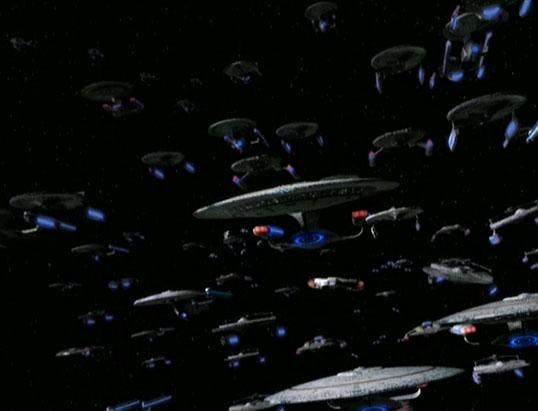
In order to facilitate travel and expansion, the Federation and Dominion both maintained large fleets of starships. Starfleet , which oversaw the operations of Federation's starships, primarily focused on scientific research and the discovery of new worlds and cultures. Peacekeeping and defending against external threats also fell under Starfleet's purview.
The Dominion fleet's mandate revolved around military matters, and its forces often deployed against perceived threats, including worlds under its own jurisdiction. Starfleet offered opportunities for all species to be a part of the organization, while the Dominion fleet again consisted of only the Vorta and Jem'Hadar. Even though Starfleet's military role took a backseat to scientific pursuits, most of its vessels possessed powerful armaments and tactical capabilities, much like the warships of the Dominion.
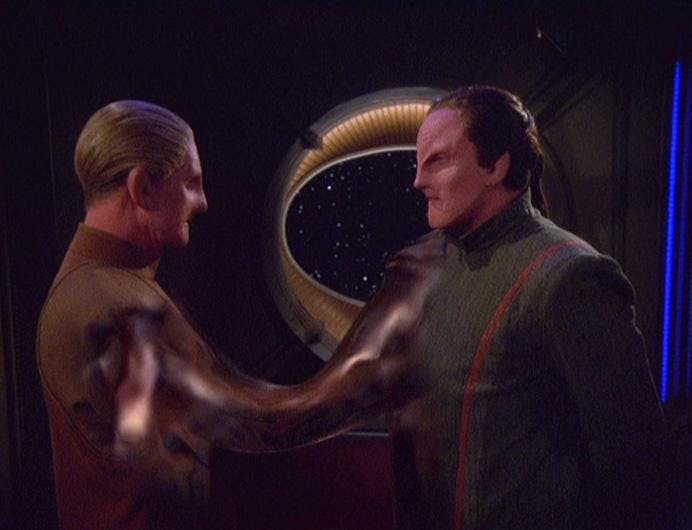
Despite the presence of significant disparities between the Federation and the Dominion, the aforementioned similarities provide hope that the two powers could coexist without conflict. Both societies sought tranquility, although the Federation preferred it to occur naturally, while the Dominion aimed to create peace through excessive force.
Exploration played a part in the creation of each government and, while the Dominion seemed to stray from that path, they did recently send out infant Changelings to learn about the galaxy. Of course, in typical Dominion fashion, espionage served as the intent of those excursions. All of the Dominion's policies that put them in opposition to the Federation stem from the Founders' fear of solids, and the war may have ironically done a great deal to change their perceptions. The Federation provided a cure to the morphogenic virus afflicting the Changelings, all of the major powers signed a treaty that did not persecute the Dominion, and Odo travelled to the Great Link to share his positive experiences with solids.
When coupled with the subtle similarities mentioned in this piece, those three developments at war's end may go a long way to improving the Founders' view of solids. With time, the Federation and Dominion may not simply tolerate each other, but learn to become valuable allies.
This article was originally published on September 13, 2016.
Jay Stobie (he/him) is a freelance writer and consultant who has contributed articles to StarTrek.com, Star Trek Explorer, and Star Trek Magazine, as well as to Star Wars Insider and StarWars.com. Jay can be found on Twitter and Instagram at @StobiesGalaxy.
Stay tuned to StarTrek.com for more details! And be sure to follow @StarTrek on Facebook , Twitter , and Instagram .
Get Updates By Email
Star Trek : Map
Revisiting Star Trek ’s Most Political Episode
In 1995, the Deep Space Nine installment “Past Tense” stood out for its realistic, near-future vision of racism and economic injustice.

“It’s not that they don’t care. It’s that they’ve given up.” This was how Commanding Officer Benjamin Sisko, played by Avery Brooks, described early 21st-century Americans in an episode from Star Trek: Deep Space Nine. When it aired in 1995, “Past Tense” spoke to contemporary concerns about homelessness by telling a story set in 2024—the near future for viewers, but the distant past for characters. In the two-part episode, Sisko and two of his companions from the U.S.S. Defiant find themselves stranded in San Francisco, where they’re reminded that the federal government had once set up a series of so-called “Sanctuary Districts” in a nationwide effort to seal off homeless Americans from the general population. Stuck in 2024, Sisko, who is black—along with his North African crewmate Dr. Julian Bashir and the fair-skinned operations officer Jadzia Dax—must contend with unfamiliar racism, classism, violence, and Americans’ apparent apathy toward human suffering.
The Star Trek franchise has, for 51 years, told plenty of stories about the political and social ills of American society. Deep Space Nine , which ran from 1993 to 1999, was no different. Set on an outpost for the peaceful United Federation of Planets’s defense and exploratory service known as Starfleet, Deep Space Nine tackled subjects such as terrorism, imperialism, and the limits of democracy during crisis. It was also the first Trek series to feature an African American commanding officer—a legacy that has been continued in CBS’s recently debuted reboot Star Trek: Discovery , which stars Sonequa Martin-Green as the show’s first black female lead.
Recommended Reading

Star Trek: Discovery Boldly Goes Into the Age of Streaming TV

The Quick Therapy That Actually Works


‘Success Addicts’ Choose Being Special Over Being Happy
The kind of storytelling Discovery is hanging its hat on, with flawed characters, multi-episode story-arcs, and a grittier outlook, was pioneered (for Star Trek at least) with Deep Space Nine. With Sisko at the helm, the series also introduced new concerns about race, family (Sisko was a widower and a loving father to his son, Jake), and what it means to be the representative of a far-away government on the (final) frontier. Looking back today, “Past Tense” still stands out for its surprisingly realistic, near-future vision of racism and economic injustice. And unlike the typically optimistic characters that occupy most of Star Trek , in “Past Tense” the people of 2024 are beaten down, exhausted, and weary of their world.
In science fiction, it’s common for the problems of the human condition to be addressed through allegory. Star Trek did this regularly. Throughout the series, aliens would stand in for different elements of an all-too-familiar debate about race, class, or gender. For example, the 1969 Trek episode “Let That Be Your Last Battlefield” tries to make a point about the absurdity of racism—via a ham-fisted story about an alien population that’s divided between individuals whose faces are half-white and half-black, and those who have the color scheme reversed. The allegory was obvious, but it elided the complexity of how racist societies operate.
“Past Tense” aired 26 years later, in the third season of Deep Space Nine . Combining a searing look at homelessness with an indictment of America’s refusal to tackle the crisis head-on, it was arguably the most straightforwardly political story Star Trek ever told. It dispensed with clumsy metaphors to examine public health and mental illness; it also confronted the effects of the country’s waning optimism following Lyndon B. Johnson’s “Great Society,” a series of domestic programs meant to end poverty and inequality in the ’60s. The script was also written and produced only two years after the Los Angeles Riots, which clearly influenced the story. The episode could perhaps have dug even deeper into its critique of bigotry. Still, “Past Tense” was notable for depicting racism not from the perspective of a well-meaning white liberal, as seen in previous iterations of Star Trek , but through the eyes of people of color directly threatened by violence and indifference.
Seeing the main characters thrust from the relative comforts of the 24th century into the despair of the 21st is jarring. Sisko and Bashir end up in a Sanctuary District, lacking the necessary identification cards to keep them from being rounded up by the local authorities. Dax, a member of the alien Trill species who looks like a young white woman, is lucky enough to be found by a wealthy member of the media who gives her new clothes and food, and makes her part of upper-crust San Francisco society. Bashir’s incredulousness at the plight of people in the Sanctuary Districts is meant to reflect the viewer’s outrage. “Why are these people in here? Are they criminals?” he asks Commander Sisko, who replies, “They’re just people without jobs or places to live.” The district’s inhabitants come from a variety of backgrounds, a reminder of how poverty cuts across race, gender, and age. What everyone there has in common—whether they are homeless, law enforcement, or an administrator—is anger at how the U.S. government has left them behind.
Where Bashir condemns American society, Sisko tells the doctor that, as Starfleet officers, they should have a longer view of history. According to Sisko—an expert on the 21st century—the social upheaval in San Francisco’s Sanctuary District plays a major role in triggering an event that will prove transformative for the country. The homelessness crisis leads to what will be known as “the Bell Riots,” named after its primary historical protagonist, Gabriel Bell, an African American man who dies in the clashes and becomes a national hero. The riots and their aftermath spur humans to become the kind of species that will, by 2161, form the enlightened United Federation of Planets.
Bell’s race gives the two-parter an eerie realism. His almost sacrificial death recalls pivotal moments in U.S. history when black Americans died violently and spurred others to ensure the nation lived up to its lofty ideals. The modern Black Lives Matter movement emerged following the acquittal of George Zimmerman in the fatal 2012 shooting of Trayvon Martin and gained wider prominence after the police killings of Michael Brown and Eric Garner in 2014. The assassination of Martin Luther King Jr. sparked the passage of the Fair Housing Act of 1968. A bombing that killed four little African American girls in Birmingham, Alabama, at the height of the civil rights movement galvanized public opinion against Southern segregation.
In “Past Tense,” things are complicated when Bell dies, ironically, trying to save Sisko and Bashir from a group of muggers within the Sanctuary District. Sisko takes on Bell’s name, knowing that his comrades’ unplanned presence in 2024 San Francisco risks damaging the larger timeline unless they can recreate the events of the riot. Because official records show that Bell died in the chaos, Sisko grimly concludes that he must take on that same task—for the sake of humanity and the Federation.
The episode’s emphasis on history is crucial. In every iteration of Trek, the captain has a special appreciation for the past. Captain James T. Kirk adored Abraham Lincoln. Jean-Luc Picard ( The Next Generation ) spoke fondly of the greatness of both France and his own family. Kathryn Janeway ( Voyager ) would, at times, reflect movingly on the progress women made on Earth. Captain Jonathan Archer’s own father ( Enterprise ) was a critical part of Earth’s early attempts in the 22nd century to advance warp travel. But for Sisko, a native of New Orleans, history spoke with a powerful, notably African American voice. Unlike the uplifting accounts other captains pointed to, Sisko indicated that he remembered humanity’s more vicious moments, too.
Sisko’s recollections of his family often included meditations on discrimination. In Season 7’s “Badda-Bing, Badda-Bang,” Sisko would refuse to participate in a holographic program set in 1962 Las Vegas due to its fanciful obliviousness of racial issues in that period. (“We cannot ignore the truth about the past,” Sisko insists.) In “Past Tense,” he immediately understands the significance of the Bell Riots, and is even willing to give his life to make sure history continues as it should. Because Sisko takes charge in the crisis, the previously belligerent security guards are willing to let him escape and to tell the world that “Gabriel Bell” died in the uprising. The Federation is saved, and the 21st and 24th centuries are saved. Nonetheless, Sisko, Bashir, and Dax are all profoundly shaken by the world that they’ve lived in for only a few days.
The creators of “Past Tense” confronted the story’s real-world analogues as they filmed it. Ira Steven Behr, one of the episode’s writers, recalled reading a Los Angeles Times report on then-Mayor Richard Riordan’s push to have the city’s homeless moved to enclosed spaces, both for their sake and for the benefit of local businesses. Behr also acknowledged the episode’s implicit racial commentary, noting for the Star Trek: Deep Space Nine Companion book that Sisko and Bashir—being people of color—were treated more harshly than Dax. He also recoiled from criticism that the two-parter was too one-sided in its portrayal of a country dealing with homelessness, telling Star Trek Monthly magazine in 1996 that, “People are still even writing that we only presented ‘one side’ in ‘Past Tense’ and that we should have presented ‘both sides’ and not just the ‘liberal’ point of view—and I’m still trying to think what that means.”
Watching from 2017, it would be easy and somewhat trite to say that the Trek writers “predicted” a divided America that seems to have forgotten its history— of slavery , of segregation , and of the hard work done to ease inequality in its many forms. But the final lines of “Past Tense” should serve as both a testament to the power of science fiction, and to how even the usually optimistic Star Trek was unsure of the near future. Bashir asks Sisko, “How could they have let things get so bad?” Sisko responds, “That’s a good question. I wish I had an answer.”
The following pictures are a selection of official or real maps taken from books, CD-ROMs and the internet. Please click on the label between the picture or on the picture itself with the right mouse button and then choose 'Save target as' from the context menu to download it.
Official Star Trek maps
Back to the Star Trek Cartography overview
� 1999-2001 by Star Trek Dimension / Webmaster . Last update: April 29th, 2001

The Map Room
Mapping Star Trek
This month marks Star Trek ’s 50th anniversary, so I thought it might be worth it to put together a little post about maps in Star Trek . This proved to be more fraught a subject than I expected. There are a lot of maps of the Star Trek universe out there by divers hands, some more official than others, and they don’t always agree on all points, as Sufficient Velocity forum member WhiteDragon25 griped in 2014 :
Despite so many planets, stars, systems, and other locations that were mentioned and referenced to throughout the entire franchise’s run, we’ve never got an official and fully accurate map of the Trek universe. […] Hell, for all of the Star Wars EU’s faults, at least it managed to generate a universally accepted map! Star Trek on the other hand, despite being just as popular as Star Wars, cannot even figure out the sizes and positions of the Feds, the Romulans, and the Klingons in relation to one another!
WhiteDragon25 might be overstating things a bit: most of the maps have the Star Trek major powers in the same relative position (other empires like the Tholians are another matter). But the point remains. While original series canon assigned aliens to known nearby stars, and the shows occasionally used real locations (e.g. Wolf 359 ), episode writers did not start with a map and generally did not take spatial relationships into consideration, which no doubt has made the belated mapping process a bit more challenging.

In print form, the earliest map I’m aware of is Star Trek Maps (1980), which according to Memory Alpha was a pair of double-sided map posters accompanied by a fairly mathy booklet; of course, the Star Trek universe was a lot smaller then. Star Trek: Star Charts came out in 2002 and seems to be considered the most canonical of the maps in existence; it’s out of print now, though. Star Trek: Stellar Cartography (2013), a collection of ten 24″×36″ folded maps. (Note that I haven’t seen any of these maps.)

Online, Star Trek Dimension’s Cartography section has maps from the series as well as Christian Rühl’s Galactic Atlas . StarTrekMap.com , a fan site that appears to be based on Star Trek: Star Charts , uses an in-universe interface that functions well (scroll wheel zooming!) but is awfully small on large screens. Neither has been updated in years. The Star Trek Online game also has, as you might expect, a map .

Share this:
Related posts.
You must be logged in to post a comment.

Dominion War
- View history
The Dominion War was a major interstellar conflict, fought from 2373 to 2375 , though related conflicts began earlier. The war involved all major powers of the Alpha and Gamma Quadrants , organized into two opposing military alliances: the Federation Alliance and the Breen-Dominion Alliance . Marked by massive military and civilian casualties, including the systematic destruction of the Cardassian population (in which more than eight hundred million Cardassians were killed), and the mobilization of starship fleets on a massive scale, it was one of the bloodiest and most destructive wars in modern galactic history.
- 2 Open war begins
- 3 Counter-offensive
- 5 The tide turns
- 6 Cardassian rebellion
- 7 Invasion of Cardassia
- 8.1 Renegade Changeling faction
- 9.1 See also
- 9.2 Appearances
- 9.3 Background information
- 9.4.1 Novels
- 9.4.2 Video games
- 9.5 External links
Prelude [ ]
Following initial Alpha Quadrant expeditions into the Gamma Quadrant, rumors began to filter through of a ruthless race of conquerors known only as "The Dominion". In 2370 , first contact was officially made between the Federation and the Dominion , when the Jem'Hadar destroyed the Starfleet vessel USS Odyssey . A state of cold war rapidly developed thereafter between several of the Alpha Quadrant's major powers and the Dominion. A Dominion invasion was widely regarded as inevitable, as the Founders were driven by a xenophobic need to exert absolute authority over all other civilizations. ( DS9 : " The Search, Part II ")
The Dominion began to infiltrate the Alpha Quadrant with Changelings masquerading as important officials, in an attempt to destabilize the political landscape between the major powers. By manipulating a plan originating with Enabran Tain , the Dominion completely destroyed the Obsidian Order and nearly completely destroyed the Tal Shiar at the Battle of the Omarion Nebula in 2371 . The subsequent power vacuum left in the absence of the Obsidian Order led to a coup on Cardassia , resulting in the overthrow of the Cardassian Central Command by the Detapa Council .
By manipulating frustrated warrior sentiments in the Klingon Empire and implanting false information that the Cardassian change of government had been engineered by the Founders, the Dominion was able to trigger the Klingon-Cardassian War . The Federation condemned the Klingon invasion, leading to a severe deterioration of relations between the two powers, ultimately concluding with the Federation-Klingon War .
Concurrently, the Dominion was almost able to instigate a war between the Federation and the Tzenkethi and caused mass hysteria on Earth following the bombing of the Antwerp Conference in 2372 , which in turn led to a failed coup attempt of Starfleet personnel under Admiral Leyton . ( DS9 : " The Die is Cast ", " The Adversary ", " The Way of the Warrior ", " Apocalypse Rising ", " Homefront ")
As part of a preemptive defensive effort, the Trill government cooperated with Starfleet in trying to seal the wormhole permanently in 2373 , without damaging the beings living within. The attempt was sabotaged by a Changeling infiltrator disguised as Julian Bashir . The Bashir Changeling was stopped by the crew of the USS Defiant in his attempt to destroy the Bajoran sun , which would have killed all life in the system and destroyed the Federation, Klingon, and Romulan fleets that were at Deep Space 9 at the time. ( DS9 : " In Purgatory's Shadow ", " By Inferno's Light ")
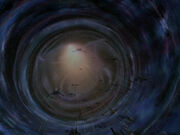
The Dominion invades the Alpha Quadrant
The Klingon invasion of Cardassia had all but destroyed Cardassian infrastructure. In mid- 2373 , frustrated at the apparent cowardice of the Detapa Council, and the broken state of the Cardassian people, Gul Dukat negotiated the entry of the Cardassian Union into the Dominion. Dukat himself was placed as head of the new Cardassian government. The Dominion rapidly began fortifying Cardassia with heavily armed convoys on a weekly basis. Within three days of their arrival, the Jem'Hadar had expelled the Klingons from Cardassian space entirely, and completely annihilated the Maquis in the Demilitarized Zone . In the face of the new Dominion foothold in the Alpha Quadrant, the Federation and the Klingons renewed the Khitomer Accords . ( DS9 : " By Inferno's Light ", " Blaze of Glory ")
Although open war did not begin immediately, violence along the Cardassian border escalated, with ships such as the USS Tian An Men and the IKS B'Moth being reported missing, though both were later located. The Dominion began making strategic political inroads in the Alpha Quadrant, signing nonaggression pacts with the Tholian Assembly , the Miradorn , Bajor , and, perhaps most significantly, the Romulan Star Empire . With five large convoys having entered the Alpha Quadrant unopposed, the Federation Alliance realized they would soon face an impossible strategic position.
In late 2373, the Federation thus decided to mine the entrance to the Bajoran wormhole with self-replicating mines in a last-ditch effort to permanently stop the flow of Dominion reinforcements into the Alpha Quadrant. Both sides knew that this act would lead to open war. ( DS9 : " Soldiers of the Empire ", " In the Cards ", " Call to Arms ")
Open war begins [ ]
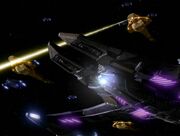
The first shots of the Dominion War, fired on Deep Space 9
Main article: Second Battle of Deep Space 9
Intent on preventing the Federation from completing the minefield , Weyoun arrived on Deep Space 9 and delivered an ultimatum ; either Sisko would remove the mines, or the Dominion would. Sisko refused the ultimatum, and, two days later, a large Dominion and Cardassian Union fleet attacked and captured Deep Space 9 . Trusting that the minefield would be activated in time, the Federation Alliance opted not to reinforce the station but used the opportunity to take advantage of the diverted Dominion ships to destroy the Dominion shipyards at Torros III . Though the minefield was successfully activated, the Alliance were forced to retreat from the Bajoran system , and the station was subsequently garrisoned by Dominion forces. ( DS9 : " Call to Arms ", " Behind the Lines ")
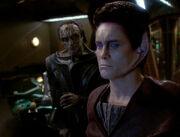
Dukat and Weyoun confer over Dominion strategy
Over the following months, Federation forces were forced to retreat on all fronts in the wake of several decisively successful Dominion campaigns. At each instance, the Allies suffered catastrophic losses. During this campaign, Starfleet suffered one of its worst defeats of the war when the Seventh Fleet was dispatched to halt the Dominion's advance at the Tyra system . In the subsequent battle, 98 starships were destroyed out of a fleet of 112, leaving thousands dead. Morale among the forces of the Federation Alliance plummeted, and it became a question of when, not if, the Alliance would be defeated. ( DS9 : " A Time to Stand ")
While the Alliance suffered repeated defeats in large fleet actions, Federation and Klingon ships had greater success in raiding operations and in combating small patrols of Jem'Hadar ships. Such operations included the destruction of the Dominion's primary ketracel-white storage facility in the Alpha Quadrant, and the destruction of a massive Dominion sensor array in the Argolis Cluster . The Dominion began suffering a shortage of ketracel-white, greatly concerning the Cardassians in particular. Glinn Damar even proposed that the last rations of white be poisoned if new supplies could not be secured, preventing the Jem'Hadar from running amok.
Nevertheless, the Dominion continued to conquer large swathes of Federation and Klingon territory, even approaching the Vulcan border and Bolian territory. On Deep Space 9, efforts to dismantle the minefield surrounding the wormhole were finally beginning to bear fruit. Although Alliance forces scored several minor successes in single-ship duels and in small groups, the inexorable Dominion advance compelled them to continually retreat. Morale sunk lower, with even the Klingons doubting they could defeat the Dominion. ( DS9 : " Behind the Lines ", " Favor the Bold ")
Counter-offensive [ ]
By the latter half of 2374 , the Federation and Klingon Empire were perilously close to defeat. A major victory was needed, if anything to boost morale. Captain Benjamin Sisko, knowing the Dominion would likely figure out how to disable the minefield eventually, proposed to Starfleet Command the Federation Alliance had to go on the offensive. Sisko's plan was to assemble a task force to recapture Deep Space 9, the most strategically important site in the Alpha Quadrant, at the mouth of the wormhole. Despite misgivings that it would leave Earth vulnerable, Starfleet approved the plan.
The Klingons proved more difficult to convince; Chancellor Gowron held the same concerns as Starfleet, in committing as many ships as would be required to re-take Deep Space 9, it would leave the Empire vulnerable. While General Martok and Lieutenant Commander Worf made Starfleet's plea to Gowron in person, Federation forces began assembling at Starbase 375 . Unfortunately, Starfleet soon received intelligence from active resistance members on Deep Space 9 that the minefield was only three days from being destroyed.
With no word having arrived from the Klingons, and only two-thirds of the Starfleet force assembled, Vice Admiral William Ross authorized Benjamin Sisko to lead the 627 ships assembled in an effort to prevent the Dominion from removing the mines. In response, Dukat pulled 1,254 warships from the front lines to intercept the Federation fleet, stalling Dominion advances into Allied territory. ( DS9 : " Favor the Bold ")

Klingon warships in combat during Operation Return
Though outnumbered two to one, Starfleet engaged the Dominion fleet . With the timely arrival of Klingon forces, the Dominion lines collapsed, and the fleet dispersed. Though the USS Defiant breached the lines, it was unable to prevent the destruction of the minefield. With no options remaining, Sisko took the Defiant into the wormhole and was able to strike a bargain with the Prophets to remove the Dominion forces to protect Bajor. The 2,800 Dominion ships in the wormhole disappeared, and with two hundred Alliance ships approaching Bajor, the Dominion position on Deep Space 9 became untenable. The Dominion withdrew all forces to Cardassian territory, giving the Alliance forces a decisive victory.
Dukat suffered a mental breakdown at the defeat, along with the concurrent murder of his daughter, Tora Ziyal , and was captured by the victorious Federation and Klingon forces. Damar was subsequently promoted to gul and succeeded him as leader of the Cardassian Union. ( DS9 : " Sacrifice of Angels ")
Following the decisive Allied victory in recapturing Deep Space 9, the Dominion forces withdrew to Cardassian space, and major operations temporarily ceased. ( DS9 : " Resurrection ") Gul Damar extended an olive branch to the Federation, hoping to negotiate a cease fire and end the war. Weyoun proposed to redraw the Federation-Cardassian border to give disputed star systems to the side with de facto control, an arrangement which generally favored the Federation. However, a think-tank of genetically-engineered individuals led by Julian Bashir deduced that the Dominion's true goal was to obtain the Kabrel system . Though strategically unimportant, the Kabrel system contained a tri-nucleic fungus that could be processed to allow the Dominion to produce near-endless amounts of ketracel-white.
Bashir advised that the Federation accept the peace proposal; while many suspected the Dominion would renege on any agreement to buy time to re-group, the Allies were in a far greater need of a respite than the Dominion. Instead, the Federation made a counter-proposal and the talks ended inconclusively. ( DS9 : " Statistical Probabilities ")
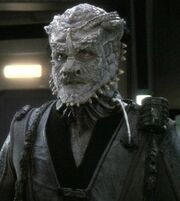
Kudak'Etan, one of the first Alpha Jem'Hadar
Several weeks later, Dominion activity began to increase all along the border, putting to rest hopes that the Allied recapture of Deep Space 9 would signal the end of the war. Allied losses began to mount, including the destruction of the USS Honshu and the USS Cortez . ( DS9 : " Waltz ", " Far Beyond the Stars ") In an effort to weaken the Federation-Klingon alliance , Dominion agents established ties with the Orion Syndicate in an unsuccessful plot to assassinate a Klingon diplomat opposed to the war and frame the war proponents led by Gowron for it. ( DS9 : " Honor Among Thieves ")
With the Prophets barring passage of the wormhole to ships from the Gamma Quadrant, the Dominion began breeding legions of Jem'Hadar, tailoring their genetic profiles specifically for combat in the Alpha Quadrant, and pushed their shipyards to full construction capacity. ( DS9 : " One Little Ship ", " In the Pale Moonlight ", " The Reckoning ") The issue of a possible ketracel-white shortage became less imminent when the Dominion acquired new supplies of the drug manufactured by the Son'a . ( DS9 : " Penumbra "; Star Trek: Insurrection )
Having recovered from the loss of Deep Space 9, in late 2374, the Dominion launched a surprise invasion of Betazed from the Kalandra sector , capturing the planet in less than ten hours. With control of this key Federation member world, the Dominion had scored a decisive strategic success; it was now in a position to launch offensives against Vulcan , Andor , Tellar , and Alpha Centauri . The Second Fleet launched three counterattacks in just one month against Betazed; however, all were repulsed. For the Federation Alliance, suffering from shortages of ships and manpower, defeat once again seemed only a matter of time. ( DS9 : " In the Pale Moonlight ", " The Sound of Her Voice ")
The tide turns [ ]
The Romulan Star Empire had hitherto remained neutral in the Dominion War, although they were turning a blind eye to Dominion warships crossing through their territory to ambush Federation convoys and shipping. Captain Benjamin Sisko reasoned that the addition of the Romulan military could prove decisive in reversing the fortunes of the Dominion. With the help of Elim Garak , and the approval of Starfleet, a covert mission was carried out to implicate the Dominion in a planned invasion of Romulus ; however, Garak used this operation for the assassination of Senator Vreenak , the most ardent pro-Dominion advocate in the Romulan Senate . From the wreckage of Vreenak's destroyed ship, the Tal Shiar recovered a recording of an alleged top-level Dominion conference bringing forward the planning of the invasion.
In response, the Romulan Empire officially declared war on the Dominion. Within hours, the Romulans struck fifteen bases along the Romulan-Cardassian border, opening the Romulan front to the war. Although progress remained slow for the allies, the Romulans drove Dominion forces off of Benzar within months of joining the war effort. During the Romulan fight against the Dominion, Shinzon distinguished himself in the Romulan military , leading twelve major engagements against the Jem'Hadar, all of them successful. The Remans were also used as heavy assault troops and cannon fodder for the most violent encounters during the war. ( DS9 : " In the Pale Moonlight ", " The Reckoning "; Star Trek Nemesis )
The Federation, desperate for additional support, continued to extend diplomatic ties to neighboring species. ( DS9 : " In the Pale Moonlight ") In 2374, the Federation Council conveyed an official diplomatic message to Grand Nagus Zek of the Ferengi Alliance , which Jake Sisko speculated was a proposal for an alliance. ( DS9 : " Valiant ") In 2375, the Federation accepted the Evora as a protectorate , despite their having achieved warp drive only the previous year. ( Star Trek: Insurrection )
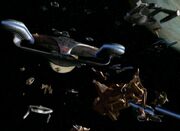
The Federation Alliance captures the Chin'toka system in 2374
With the Romulans now fully committed to the Federation Alliance, options for a general offensive into Cardassian territory became a viable possibility. The Romulans had reservations that such an attack could succeed only at horrendous cost, favoring to contain the Dominion within Cardassian space. However, Benjamin Sisko convinced their delegation that the only course to victory was to destroy the Dominion's military-industrial complex itself. The Allies agreed they would commit their efforts to the Chin'toka system , its defenses having recently been thinned to provide additional support for the Romulan front .
In late 2374, the Federation Alliance launched their first offensive into Cardassian space , capturing Chin'toka after a hard fight. ( DS9 : " Tears of the Prophets ") Although the planned attack against Cardassia itself was not realized, owing to heavy losses taking Chin'toka, the successful invasion was a tremendous boost to Allied morale. The Allied hold on Chin'toka was tenuous at best; the system remained under almost constant attack, making it extremely difficult to reinforce the garrisoned forces. Further offensives were bloodily repulsed; a Klingon fleet lost thirty percent of its strength attacking Monac IV . ( DS9 : " Image in the Sand ", " The Siege of AR-558 ")
On other fronts, the Allies enjoyed greater success. Elim Garak began working for Starfleet in an unofficial capacity breaking Cardassian military codes; one such breach enabled the Allies to retake the Kalandra system from the Dominion. ( DS9 : " Afterimage ", " The Emperor's New Cloak ") While the Allies consolidated their new front, General Martok launched a deep penetration raid into Cardassian space that damaged several key military targets. ( DS9 : " Once More Unto the Breach ")
Meanwhile, while the Ferengi maintained a sense of neutrality, the Grand Nagus was nevertheless kept up-to-date on the war efforts by Starfleet through their intelligence reports. In 2375 , he sent Quark on a fact-finding mission to the front lines , specifically the Chin'toka system, aboard the Defiant . However, according to Quark, " If the Federation had listened to the Ferengi Alliance there never would have been a war, [...] [as they] would have reached an accommodation. We would have sat across the negotiation table and hammered out a peace treaty . One that both sides could live with. " He later quoted the 125th Rule of Acquisition to justify such reasoning, " You can't make a deal if you're dead . " ( DS9 : " The Siege of AR-558 ")
In 2375, the Federation learned of a development that would ultimately help determine the course of the war: a deadly morphogenic virus had infected the Great Link . Despite the Dominion's technological prowess, they were unable to find a cure, and it was determined it would only be a matter of time before the Founders would die. ( DS9 : " Treachery, Faith and the Great River ") It was later discovered that the virus had been engineered by Section 31 , a rogue branch of Starfleet Intelligence . Although Julian Bashir did find a cure, the Federation Council decided to withhold it from the Dominion for strategic concerns. Some protested this act as abetting genocide . ( DS9 : " Extreme Measures ", " The Dogs of War ")
Cardassian rebellion [ ]
Meanwhile, the Alliance's slowly encroaching front-line had begun to seriously strain relations in the precarious Dominion-Cardassian alliance. The Founders and their Vorta underlings tended to rest blame upon the Cardassian military for the defeats on the frontlines, an accusation that Damar, now promoted to legate , found particularly galling. Many Cardassian soldiers grew distrustful and resentful of the Dominion, while the Dominion continued to erode Cardassian autonomy.
Seeking to rescue the war effort, in mid-2375, the Dominion conducted secret negotiations with the elusive Breen Confederacy to propose a military alliance ; negotiations which the Cardassians were not privy to. The Dominion granted the Breen unspecified Cardassian territorial concessions in exchange, concessions which Legate Damar had neither seen nor agreed to. His objections were summarily overruled. ( DS9 : " Penumbra ", " 'Til Death Do Us Part ")
Damar grew concerned with further Allied advances, specifically the garrison of the Eleventh Order on Septimus III , which would fall without Jem'Hadar assistance. The Dominion refused to render aid, regarding it as an acceptable sacrifice. The Klingons subsequently invaded the planet and massacred the garrison. This action finally spurred Damar to rebel against the Dominion . ( DS9 : " Strange Bedfellows ", " The Changing Face of Evil ")
The Breen Confederacy entered the war in late 2375 with a bold raid on Starfleet Headquarters . This sent shock waves through the Alliance.
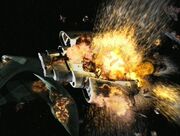
Allied ships are annihilated during the Breen counterattack on Chin'toka
Now able to mobilize a large fleet to carry out offensive operations, the Breen-Dominion Alliance launched a massive counterattack against the Chin'toka system . The battle would prove to be the worst Allied defeat of the entire war; of the 312 ships engaged, all but one were destroyed. However, they could not press their advantage, as soon after, the Cardassian Liberation Front attacked the Dominion military installations on Rondac III , diverting vital resources from the front. ( DS9 : " The Changing Face of Evil ")
The only Allied warship to escape the Breen energy dissipaters at Chin'toka was a Klingon warship, the IKS Ki'tang , owing to a chance modification of the ship's tritium intermix . General Martok ordered the modifications across the entire Klingon fleet and had 1,500 warships ready for deployment the following day. With the Federation and Romulan fleets effectively useless in the interim until a countermeasure could be developed, the Klingons were left with the daunting task of holding the front-line against the Breen-Dominion Alliance. ( DS9 : " When It Rains... ")
However, the Allied defensive efforts were soon jeopardized by Chancellor Gowron, who believed his political position had become threatened by Martok's popularity in the Empire. Gowron took direct command of the Klingon fleet and repeatedly ordered Martok on hopeless attacks, intending for him to be killed or disgraced. With the safety of the Alpha Quadrant at stake, Benjamin Sisko ordered Lieutenant Commander Worf to deal with Gowron. Worf directly challenged his leadership and slew him in single combat. Worf then proclaimed General Martok as the next Chancellor of the Klingon High Council . ( DS9 : " Tacking Into the Wind ")
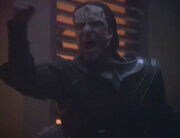
Damar rallying the Cardassian people against the Dominion
Meanwhile, the Federation Alliance saw a strategic opportunity in the Cardassian rebellion to keep the Breen-Dominion Alliance constantly off-balance. The Federation supplied replicators , weapons and food supplies to the rebels, and dispatched Kira Nerys to train Damar's troops in guerrilla tactics. ( DS9 : " When It Rains... ")
The Cardassian rebels began carrying out a number of sabotaging attacks on Dominion ships and military installations and were able to deliver a functioning Breen energy dissipater to the Allied forces. ( DS9 : " Tacking Into the Wind ") Unfortunately, however, the success of Damar's revolt was short-lived. Gul Revok , who allegedly wanted to defect to the rebels, betrayed them to the Dominion. Jem'Hadar and Breen ships rapidly destroyed all eighteen rebel bases, ending the organized resistance against the Founders' rule. ( DS9 : " The Dogs of War ")
Invasion of Cardassia [ ]
Although the Cardassian military rebellion had ostensibly been crushed, Starfleet and Romulan engineers were able to develop a countermeasure to the Breen energy dissipater, thus denying the Dominion of their one major tactical advantage over the Allies. Facing a renewed counter-offensive on a wide front, the Dominion-Breen forces withdrew from all conquered territories and established a fortified perimeter within Cardassian space. Their hope was that the Allies would balk at the cost of breaching the perimeter, giving the Dominion time to rebuild.
While containing the Dominion within its present borders was a tempting move, the senior Allied commanders argued the Dominion could not be afforded any respite. Instead, the Allies would mobilize all their available ships to launch a single, decisive strike against the heart of Dominion power in the Alpha Quadrant: Cardassia. ( DS9 : " Tacking Into the Wind ", " The Dogs of War ")
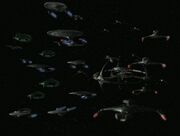
The Allied fleet departs Deep Space 9 to invade Cardassia
On Cardassia itself, the remnants of the resistance had not been idle. The bold revolt, though ultimately defeated, had left a scintillating impression upon the Cardassian people. Buoyed with this knowledge, Damar, Garak, and Kira Nerys successfully bombed a Jem'Hadar barracks, rallying the civilian population into a popular uprising against the Dominion.
Meanwhile, the Allied fleet crossed into Dominion space and engaged the Dominion-Breen forces in battle . Concurrently, popular revolt on Cardassia sabotaged the planet's power grid, cutting off transportation and communication systems, causing a planetary blackout. The fleet defending Cardassia was completely cut off from Dominion Headquarters . In retaliation, hoping to discourage further attacks, the Jem'Hadar destroyed Lakarian City , killing two million civilians. Instead, it had the opposite effect; the Cardassian military abrogated their alliance, fracturing the Dominion lines, forcing it to retreat. Infuriated, the Female Changeling ordered the Jem'Hadar to exterminate the Cardassian population.
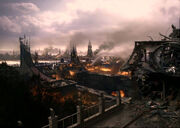
Cardassia Prime in ruins after the Jem'Hadar bombardment
While the Jem'Hadar rampaged across the planet, the Dominion-Breen fleets in orbit of Cardassia were ordered to fight to the death, ensuring only a pyrrhic Allied victory. As the Allies laid siege to Cardassia, rebels breached Dominion Headquarters, capturing the Founder. Odo convinced the Founder to surrender rather than fight; in exchange he would return to and cure the Great Link of the morphogenic virus. The Founder agreed, and the Dominion forces surrendered; the first time it had ever done so in battle. ( DS9 : " What You Leave Behind ")
Aftermath [ ]
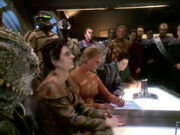
The Treaty of Bajor is signed on Deep Space 9
The instrument of surrender, the Treaty of Bajor , was signed on Deep Space 9 between representatives of the Federation Alliance and the Dominion several days after the surrender at Cardassia. The treaty stipulated the Dominion would effect a complete military withdrawal to the Gamma Quadrant, while Alpha Quadrant territories were reverted to their boundaries as of stardate 50564.0, just prior to the Dominion's initial incursion into the Alpha Quadrant. ( DS9 : " What You Leave Behind ")
The Dominion War significantly shifted the power dynamics of the Alpha Quadrant. The Cardassian Union had collapsed completely and Cardassia Prime was left in total disarray; over eight hundred million civilians had been killed by the Jem'Hadar in mere hours, in addition to over seven million troops during the war, and the leading figures in both Cardassia's official and underground governments had been killed. The Breen Confederacy had shown both its impressive military and technological capabilities and its desire for violent expansion.
The Klingon Empire, having previously suffered heavy casualties in the conflicts with the Cardassians and the Federation, was projected to focus on recovering from the war for a decade. The two remaining major powers were the Federation and the Romulan Star Empire. Romulan relations with the Federation declined after the war, with the Federation embargo on Romulan goods reinstated.
This resumption of pre-war attitudes would last until 2379 , when a military coup led by noted Dominion War commander Shinzon of Remus planned to commit a genocidal attack on Earth. Shinzon's defeat gave the Federation hope for improved relations with the Romulan Star Empire. These hopes however died in 2385 , when a Zhat Vash infiltrator in Starfleet orchestrated a devastating attack on Mars in order to turn public opinion against artificial lifeforms . Although the Zhat Vash's involvement would not be exposed for another 14 years , the attack, combined with preexisting political pressure, caused the Federation to abandon efforts to relocate nine hundred million Romulans to safety from the impending supernova of the Romulan sun . ( DS9 : " Inter Arma Enim Silent Leges ", " What You Leave Behind "; Star Trek Nemesis ; Star Trek ; ST : " Children of Mars "; PIC : " Remembrance ", " The End is the Beginning ", " Broken Pieces ", " Et in Arcadia Ego, Part 2 ")
In the Gamma Quadrant the order of the Dominion was maintained when Odo, fulfilling his pledge to the Female Changeling, did indeed return to the Great Link thus curing it of the morphogenic virus. ( DS9 : " What You Leave Behind ")
After the war, Starfleet established a standard protocol by which all personnel were required to pass through an internal imaging chamber before reporting, to check that they had not been replaced by a Changeling. ( PIC : " Imposters ")
Only five years after the war's conclusion, at least one Starfleet officer, Lieutenant Steve Levy , maintained a conspiracy theory that Changelings were not real and "the Dominion War didn't happen." ( LD : " No Small Parts ")
Beckett Mariner developed survivor guilt partially as a result of fighting in the Dominion War, and later cited the war as a reason for her self-destructive behavior. ( LD : " The Inner Fight ")
Renegade Changeling faction [ ]
Some time after the Dominion's surrender, the Great Link fractured, with a rogue faction vowing to continue fighting against the Federation. In 2401 , Starfleet was aware of the Changeling rebels yet kept that information secret out of fear that the news would result in calls for the Federation to go to war against the Dominion again. Much of this faction was wiped out when the USS Titan -A destroyed the Shrike and their leader Vadic was killed. Before her death, Vadic revealed that she had been a prisoner of war during the Dominion War and had been experimented upon during Project Proteus , resulting in her enhanced abilities that she had given to the rest of her faction. ( PIC : " Seventeen Seconds ", " Surrender ")
The renegade Changeling faction's full plans were later revealed to be a deadly alliance with the Borg Queen , who was, like the Dominion, an enemy of the Federation whom Starfleet had defeated. The Queen used her Changeling allies to plant an assimilated DNA that was within Jean-Luc Picard's human corpse inside of Starfleet's transporter code in order to covertly assimilate all Starfleet officers under the age of 25. The plan did succeed briefly, until Admiral Picard and his crew used the recently rebuilt USS Enterprise -D to save Jack Crusher , Picard and Beverly Crusher 's son, who was being used by the Borg as a transmitter for the Collective to the assimilated officers. Picard and his crew succeeded, and the Borg Collective - decimated by a neurolytic pathogen years earlier - was finally destroyed by the Enterprise .
After the Borg's final destruction, Admiral Crusher as the new head of Starfleet Medical , developed a transporter solution to eliminate Borg DNA from the infected officers as well as a method of detecting the evolved Changelings, thus exposing the remaining infiltrators for arrest. Starfleet discovered that the Changelings had kept many of the officers whom they had replaced alive, including Captain Tuvok , and were able to find and rescue them, bringing a final end to the rogue Changelings plans. ( PIC : " Võx ", " The Last Generation ")
Appendices [ ]
See also [ ].
- Starships in the Dominion War
Appearances [ ]
- " Call to Arms " ( Season 5 ) (First appearance)
- " A Time to Stand " ( Season 6 )
- " Rocks and Shoals "
- " Sons and Daughters "
- " Behind the Lines "
- " Favor the Bold "
- " Sacrifice of Angels "
- " One Little Ship "
- " Honor Among Thieves "
- " In the Pale Moonlight "
- " Valiant "
- " Tears of the Prophets "
- " Once More Unto the Breach " ( Season 7 )
- " The Siege of AR-558 "
- " Penumbra "
- " 'Til Death Do Us Part "
- " Strange Bedfellows "
- " The Changing Face of Evil "
- " When It Rains... "
- " Tacking Into the Wind "
- " The Dogs of War "
- " What You Leave Behind "
Background information [ ]
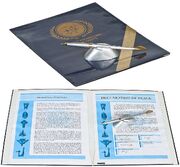
The Treaty of Bajor prop
Ira Steven Behr and Ronald D. Moore were the writers most involved with the creation and development of the Dominion War. Rick Berman wanted the war to be over within three or four episodes at the most. Behr and Moore knew the series would never be able to wrap up the war in that many episodes. Berman also criticized the "depressing" and "violent" stories. Moore later said " It's a fuckin' war! What do you mean it's too violent?! " [1] (X)
Behr commented in 2019: " Everyone loves the Dominion War. But the Dominion War could have played out with an even bigger arc. There was lots of horse trading to even get what we were able to accomplish in terms of the Dominion War. It would have been great to make it more serialized as well ". [2]
Peter Lauritson commented: " DS9 was also where we really showed the Starfleet armada for the first time, with big fleet-type shots and big ship battles. I think that remained the only place where you saw that scale of encounters between the different factions, between the Dominion and the Cardassians and the Federation and its allies ". ( Star Trek: The Official Starships Collection , issue 147, p.14)
Armin Shimerman had hoped to have seen the Ferengi involved more in the Dominion War arc. Shimerman commented: " It would have been very interesting to see how people made profits off of wars, to see a black market during the war, to see how the Ferengi, who were basically neutral during the war, behaved. We did a bit of that but we didn't delve into that as much as we could have ". ("The Once and Future Ferengi: Armin Shimerman Reflects on Quark", Star Trek: Communicator issue 130 )
Majel Barrett criticized the arc in a letter published in Star Trek: Communicator , ( citation needed • edit ) claiming that Gene Roddenberry would have never approved of a continuing war in a Star Trek series. Berman has espoused similar sentiments, noting that his opposition " was all based purely on the fact that Gene had been very specific to me about not wanting Star Trek to be a show about intergalactic wars, interspecies wars. He didn't want it to be about humans fighting wars against other species. " [3] Responding to the former, Moore admitted, " She's probably right. It would've been very hard to argue Gene into going this way and maybe he'd have never gone for it. However, I would've still argued for doing the Dominion War with him and if he'd rejected it, I would've thought he was wrong. I respect Gene and his work, but I don't think he was always right and I'm not going to pretend that I do. The Dominion War has been one of the better storylines we've come up with whether Gene would've agreed or not. " ( AOL chat , 1999 )
Bjo Trimble commented: " I feel that Gene might have come to like DS9, had he lived to see it. There might have been some changes. Majel recently said that GR would have hated the war in DS9, but frankly I am amazed that she cannot see the same theme in much of what Gene did, including his recent "discovery" of Earth: Final Conflict . The only reason there were not full battles in early Trek is lack of funds to pull it off, and lack of technology to show it. Otherwise, GR would certainly have added it; he knew what audiences liked. I don't know about Voyager ; I can't see where it's going, and I don't feel GR would have liked that. I don't think he would have liked the last couple of movies; they were very far removed from the Trek Gene came up with. " [4]
The Dominion War was directly referred to on four occasions outside of Deep Space Nine : VOY : " Message in a Bottle ", Star Trek: Insurrection , Star Trek Nemesis and LD : " No Small Parts ".
Michael Chabon of Star Trek: Picard commented that the writers " tried to work [the war] in several times, in drafts. Wiser heads argued correctly that it made things just that much more intimidatingly complicated for non-fans ". [5]
Apocrypha [ ]
In Rising Son , it is revealed that the inhabitants of the Gamma Quadrant refer to the war as the "Quadrant War".
The war is frequently mentioned in Pocket Books novels and reference books, and there is also a section on it in the Star Trek: Star Charts and Stellar Cartography: The Starfleet Reference Library .
- Tales of the Dominion War
- Behind Enemy Lines
- Call to Arms
- Tunnel Through the Stars
- Sacrifice of Angels
- What You Leave Behind
- The Battle of Betazed
Video games [ ]
- Star Trek: Deep Space Nine - Dominion Wars
External links [ ]
- Dominion War at Memory Beta , the wiki for licensed Star Trek works
- Dominion War at Wikipedia
- 2 ISS Enterprise (NCC-1701)

IMAGES
VIDEO
COMMENTS
The purely political maps are revised, apparent errors and several inconsistencies have been found and solved. ... Laurie Brown created a Travel Calculator for the Star Trek Universe based on my maps, you can use it on her website. 05-12: Update Marathon Part III. The false correlation of Archer and Loracus has been resolved, ...
The map above is Shakaar's Alpha/Beta map v3.3; a fan-made creation showing the Alpha and Beta quadrants of the Star Trek universe. The map shows both major and minor powers that have appeared in the various series over the years. At the centre is the United Federation of Planets, which borders the major power of the Klingon Empire, Roman ...
However, the appearance of a political map of the Milky Way considerably differs from a normal geographical map, because such a inconceivably vast region like our Galaxy can surely not be compared with the surface of a planet. ... most of the area of a map of the Star Trek Galaxy remains blank - unexplored or neutral space, in which the local ...
STELLAR CARTOGRAPHY - UFP MAIN CORE. Information. This map is featuring the birthplace of the Federation, as well as many other powers and most of the known locations in the 24th century. The map is based on similar maps in the Star Trek Star Charts, which have been combined to form one large map. Several missing locations have been included ...
Star Trek has based much of its drama — and many of its philosophical questions — on ideas about what futuristic governments might look like, from the military dictatorship of the Cardassian Union, to Vulcan's rationalist meritocracy, to the matriarchies of Orion, Angel I, and the Skrreeans. " Men are far too emotional to be leaders ...
MOD. Finally an official and detailed map of the Federation & surrounding area. THIS MAP was produced by Andrew Jarvis, one of the effects people working on Star Trek Picard. It appeared on-screen both at Starfleet HQ and onboard Riker's starship. It represents the Federation and other nearby spaces in year 2399 (when Picard takes place).
The Dominion War ravaged the Alpha and Beta Quadrants during the 2370s and involved most of the major powers in the region. The Federation and the Dominion, two of the primary belligerents, suffered severe losses in the conflict that placed their societies at odds with one another.The leaders, histories, values, policies of expansion, styles of governance, and fleets of these two governments ...
Created: 8-3-1999. The Star Trek Cartography is the biggest source on information, data, programs and maps concerning the galactic geography in the internet. The mission of this project: to give the fans insight into the structure of the Star Trek universe for the first time, using all official facts, the episodes and the "real" astronomy in ...
Star Trek : Map. Home Tools Star Trek : Map. Campaign Map: Off On Measture Tool: Off On Area Tool: Off On Distance. Warp Scale: Crusher TNG. Warp Factor. Engine Score. Power Requirement. Speed. Time. vpn_keyMap Key. The galaxy is divided into four quadrants (α, β, γ, δ), defined by two meridian passing through the galactic core. ...
The Star Trek franchise has, for 51 years, told plenty of stories about the political and social ills of American society. Deep Space Nine , which ran from 1993 to 1999, was no different.
In addition to maps of the most popular areas of the Star Trek universe, the site provides handy tools. For instance, the Stellar Library provides information like common species, political powers, planetary and star classification, and details about common stellar phenomena like black holes and wormholes.
On some Star Trek maps of the center of the galaxy, the galactic core is regarded as its own area, not part of any of the four Quadrants. The Cytherians, from the Next Generation episode "The Nth Degree," are located near this area. In Star Trek V: The Final Frontier, a "God"-being is encountered from within what is called the "Great Barrier".
The spatial Star Trek universe: Space near Earth: The Romulan Neutral Zone: from Star Trek: DS9: from Star Trek Generations: from [TOS] Balance of Terror: taken from Sector 001, extended by Webmaster: prepared by Webmaster: taken from Star Trek in Sound and Vision: 1123 x 788 px, GIF, 148.0 KB: 360 x 304 px, GIF, 61.6 KB
A federation (Latin: foedus, foederis, 'covenant'), also known as a federal state, is a political entity characterized by a union of partially self-governing states or regions under a central (federal) government. In a federation, the self-governing status of the component states, as well as the division of power between them and the central ...
In print form, the earliest map I'm aware of is Star Trek Maps (1980), which according to Memory Alpha was a pair of double-sided map posters accompanied by a fairly mathy booklet; of course, the Star Trek universe was a lot smaller then. Star Trek: Star Charts came out in 2002 and seems to be considered the most canonical of the maps in ...
The Dominion War was a major interstellar conflict, fought from 2373 to 2375, though related conflicts began earlier. The war involved all major powers of the Alpha and Gamma Quadrants, organized into two opposing military alliances: the Federation Alliance and the Breen-Dominion Alliance. Marked by massive military and civilian casualties, including the systematic destruction of the ...
The gold standard is the map found in the Star Charts book - most maps you'll find are derived from that. This is the biggest map from there. There's no thorough and consistent official map, because the writers don't want or need to be tied down by working how long it takes to get from one particular place to another. There are plenty out there.